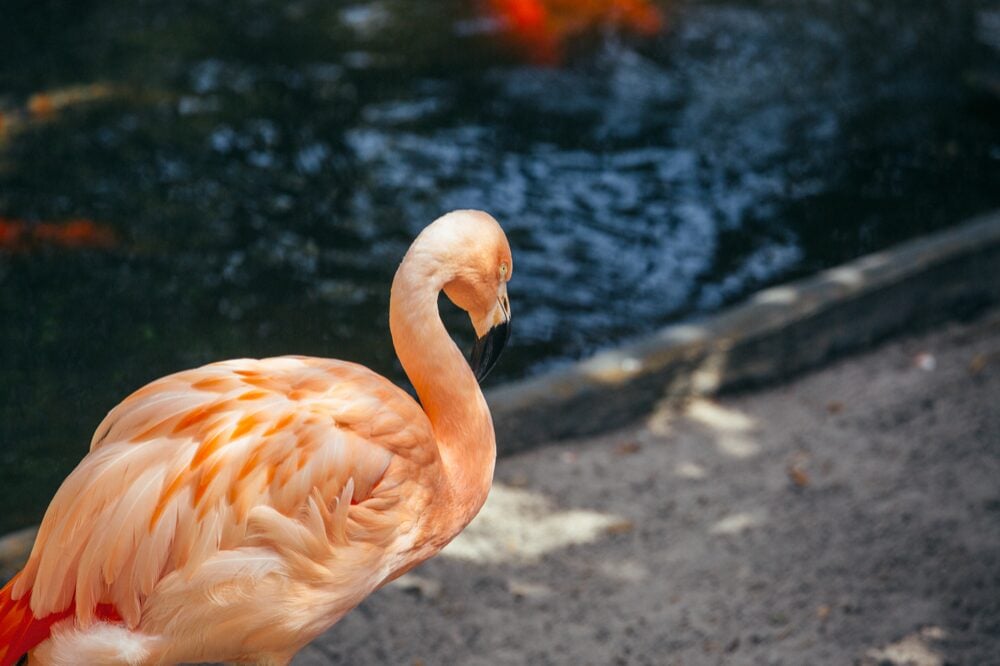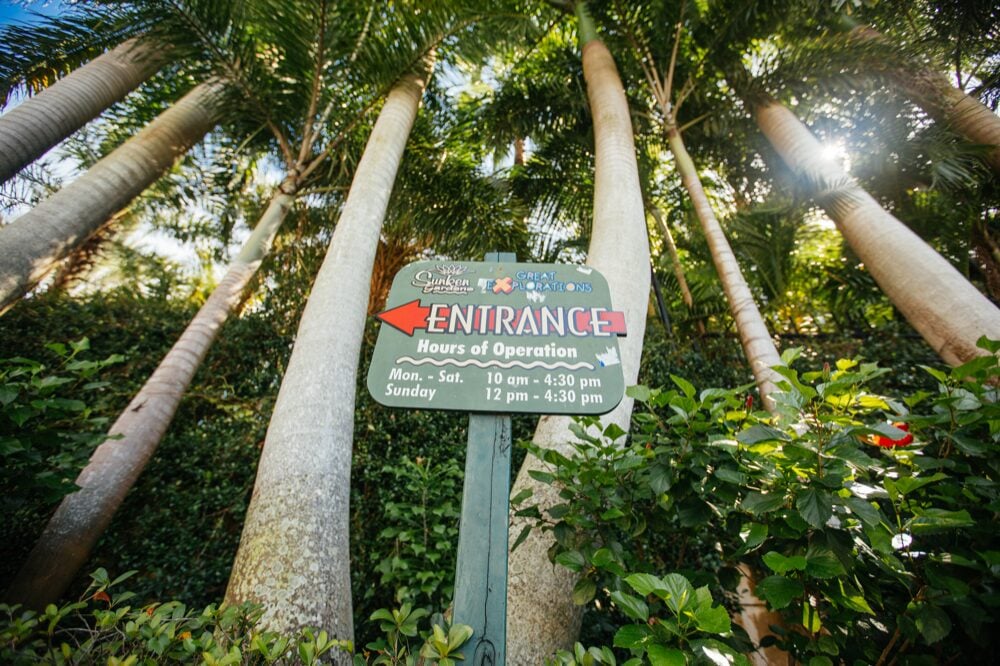In 1989, I began a job as a manufacturer’s representative. Actually, I represented 25 different manufacturers, all of which sold products related to the gift and tourism industries. Let’s see, I was living in Northeast St. Pete, pretty close to a popular tourist attraction which boasted the “World’s Largest Gift Shop”. It was a no-brainer. Naturally, Sunken Gardens became my first cold call.
A rather large Sunken Gardens sign at 1825 4th Street North graced the parking lot, which made it rather easy to find. I parked near the entrance, which in and of itself was an attraction. The main entrance was designed to give the appearance of a tropical cave with a waterfall and small pond. Pink flamingos waded to the right of a bridge that went over the water, and I entered the cave and approached the ticket counter, where I paid my entrance fee.

My first glimpse of the gift shop amazed me. It was huge. As I looked among the displays I was sure I had a bunch of stuff that would fit right in. Let’s just say over the course of the two years I was in the business, the Gardens became my largest customer.
Throughout the two years, I had the opportunity to speak with many of the employees and management. Since I had an interest in history, those who had been longtime employees were eager to share what they knew.
Early Days
The beginning of Sunken Gardens can be traced back to 1903, when George Turner, Sr., a plumber by trade, who also was an avid gardener, bought six acres of land in St. Petersburg. He drained a shallow lake on the property, which was below sea level, leaving a mucky, rich soil, perfect for his favorite hobby, and began cultivating his sunken botanical garden.
By the early 1920s, Turner found that his friends and neighbors enjoyed wandering through his lush property, so he began charging a nickel per visitor. He planted papayas, citrus trees and other exotic plants in the rich soil surrounding his home. Turner opened a nursery and began selling fruit, vegetables, flowers and other plants. In the fall of 1935, he fenced in his botanical garden and increased the admission fee to 25 cents.
Mid Century
The main building on Fourth Street was built in 1926 as the Sanitary Public Market. It was a Mediterranean Revival style, walk-through arcade with twin Moorish towers, cast stone trim and a tile roof. The Market closed in 1931 and the building became the American Legion Armory, used for wrestling matches and other Legion events.
In the 1940s, the building was sold to the St. Petersburg Bottling Company for use as a Coca Cola bottling plant. The Turner family purchased it 1967 and turned it into the World’s Largest Gift Shop and the King of Kings Wax Museum, which featured life-size wax figures portraying scenes from the bible.
The Gardens became very popular as a roadside attraction through the years, and from the 1950s through the 1970s it was ranked among Florida’s top ten commercial attractions. Turner’s vision was maintained by three generations of his family. In the face of dwindling attendance, the Turner family made several changes, including adding an area for garden weddings and receptions. They finally closed the attraction in 1995.
Present Day

In 1999, the City of St. Petersburg bought Sunken Gardens with funds from a voter-approved tax. The Gardens were designated as a local historic landmark and underwent several years of restoration. On June 27, 2002, the former Sanitary Public Market building was added to the U.S. National Register of Historic Places.
Today, the Gardens are still maintained by the City, and feature more than 500 species of tropical and subtropical plants, as well as cascading waterfalls and pools. The collection contains more than 50,000 tropical plants. The atmosphere of the gardens is peaceful and serene, with quiet paths to stroll at your leisure, and benches to sit and reflect on the beauty of nature. Many plants have grown quite large, compared to typical specimens, owing to their long history of protection and cultivation. Some of the plants are more than 100 years old!
The main building is now home to Great Explorations Children’s Museum. Once located near the pier approach, the museum moved adjacent to Sunken Gardens in 2003. With hands-on, interactive exhibits, Great Explorations is a popular school field trip destination, and is a great place for parents to take kids to cool off inside on a hot day.

Plan a Visit
Discover, or rediscover, this hidden gem in the heart of St. Pete! Sunken Gardens is open Monday-Saturday, 10:30 a.m.-4:30 p.m., and Sunday, noon-4:30 p.m. (admission sales end daily at 4pm). Admission is $10 for adults, $8 for seniors 62+, and $4 for kids age 2-11. Or, purchase an annual family membership for just $50, and visit as often as you like. Visit http://www.stpete.org/attractions/sunken_gardens/index.php for upcoming special events, including the annual Orchid Festival on March 11 and a class on Easy Care Natives and Wildflowers on March 24.



